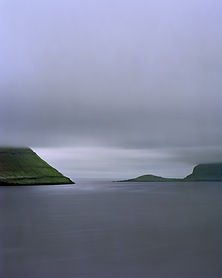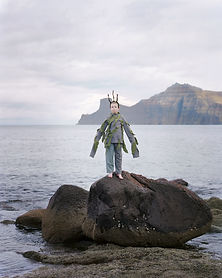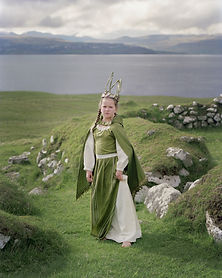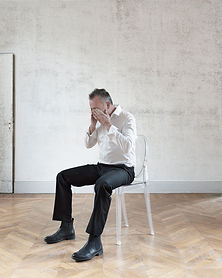Sagnir





I first arrived in the Faroe Islands in June 2021. When my feet first set foot on the lush green soil of these lands located between Iceland and Norway, the mountaintops were half engulfed in thick fog and the rain was falling steadily. I immediately felt the mystical atmosphere of this country.
Each uniquely shaped rock suggests the Huldufólk, the hidden people, twirling through the downpours. The winding roads lull you, the shafts of light have a divine air. Around the vertiginous cliffs, countless sea creatures are found, gloomy testimonies no doubt due to the force of the tides and storms. I was struck by the omnipresence of tales, closely linked to the nature to which this isolated people were subjected over the centuries. It was at a second-hand store in Runavík on the island of Eysturoy that I met Anna Maria Olsen. Her face, speckled with beauty spots, surrounded ocean-colored eyes, contrasting with the abysmal black of her hair.
Curious, like many of the inhabitants of this archipelago of 18 islands, we came to discuss my idea for a co-creation photographic project with children on local myths and legends, and my desire to appreciate the impact of these stories on Faroese children. As luck would have it, she was a teacher in a primary school in the neighboring village of Toftir. Spontaneously and very quickly, I was led to go to the school every Tuesday for the reading of stories with a CM2 class for a year. Throughout this year, the children were able to discover and rediscover the stories of their islands. With few existing visual representations, they imagined, drew and embodied these characters from ancient stories.
We then created costumes using a sewing machine for each of the students, who posed in the precise locations of these legends, immortalized with a 4x5 camera. Although they are based on real or imaginary facts or beliefs, myths and legends propagate values, transcend fears and sublimate the hopes of a people. They are often marked by the experience of a territory, but over the centuries, the tale has lost importance within society.
The daughter of the air




The Daughter of the Air is an intimate dive, an uncertain journey through childhood. Carried by contrary winds, I grew up in the depths of a storm: a neurotic stepfather, broken ties, a hasty escape to a father who was almost a stranger.
I touch upon these memories through images where the tangible gives way to the symbolic. Dreams and fears mingle, like a shifting, swaying sky. These images, woven from fragments, are the mirror of my unconscious: fleeting details, shadows that stretch, float, and sometimes collide like the wind against a closed window.
The young girl I was danced on the edge of the void, light but never free. Today, I breathe on these ashes to rekindle a light. The Daughter of the Air is this whisper, a silent quest, a poem dedicated to the vital impulse that carried me further than the storm.
The Green Lady



Born from oral stories from the 14th century and written down in 1981 by Jean Le Mauve, the Green Lady still haunts the landscapes of Picardy where I grew up. She embodies nature in all its strength and vulnerability, rewarding or punishing according to the justice of actions.
In my work, she comes back to life. I wanted to follow her in her metamorphoses—birth, blossoming, disappearing—like an echo of the cycle of the seasons and our fragile bond with the living. Between legend and reality, her shadows continue to slide across the land that saw me born.
